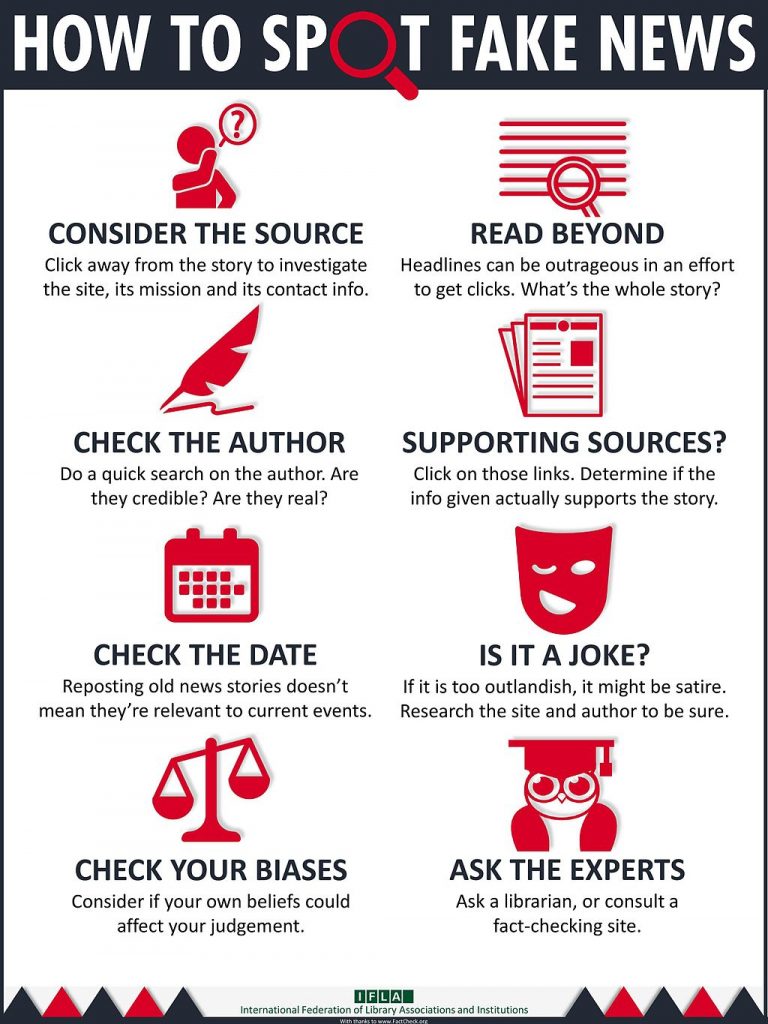Written by: Frances Chung
As most of us are well-aware, fake news and unsupported claims are common throughout the internet and our social media feeds. Many fake news websites have been identified and consistently debunked, as listed on Wikipedia, but still, attract regular readers. At the same time, social media platforms are experimenting with methods for creating “friction,” so users take more time to consider a story before sharing (Bond, 2020). For example, Twitter labels misleading or disputed claims and in extreme cases, hides them behind warnings and requires users to add their own comments before sharing or replying.
So what does media and information literacy (MIL) have to do with fake news? According to UNESCO (2017), MIL “empowers citizens to understand the functions of media and other information providers, to critically evaluate their content, and to make informed decisions.” Therefore, an information literate person can better assess how credible a piece of information is and recognize its emotional appeals. As access to information increases, more schools and libraries are offering MIL education. Through the UNT Libraries, students have access to this Information Literacy Tutorial, which also covers how to get started with a research project.
When you come across a questionable piece of news, there are simple ways to determine if it is fake, from researching the source and author to looking further into the article and its sources. Satire is commonly published alongside real news or based on actual events, so if something seems unreal, it could be a joke. If you are unsure, ask experts such as librarians to help you find background information or suggest research strategies. Additionally, many websites specialize in fact-checking by cross-referencing sources and then rating statements on how true they are. Some popular ones are:
- Snopes – “The oldest and largest fact-checking site online”
- PolitiFact – A Pulitzer Prize-winning site run by journalists and editors.
- Reporters’ Lab from Duke University keeps a database of over 300 global fact-checking sites.
Don’t forget about Wikipedia, which has up-to-date information on publishers and authors.

The UNT Libraries are here to help you find credible resources and analyze information. Resources on library.unt.edu have been evaluated by librarians, so your search results will not include fake news or satire. Furthermore, databases such as Nexis Uni allow you to search and compare multiple news sources at once. For more tips on evaluating sources, check out the libraries’ Media Literacy guide or contact Ask Us for research help!
References
Bond, S. (2020, November 12). Twitter keeps some measures it says slowed election misinformation. NPR. https://www.npr.org/2020/11/12/934280798/twitter-says-steps-to-curb-election-misinformation-worked
UNESCO. (2017). MIL as Composite Concept. http://www.unesco.org/new/en/communication-and-information/media-development/media-literacy/mil-as-composite-concept/



Leave a Reply